Hardware
Software & Services
Laser/LiDAR
Vision Guidance
Others
E-Commerce
Manufacturing
Retail
Food & Beverage
Healthcare
Logistics
Others
North America
Europe
South America
Asia Pacific
Middle East and Africa
North America Autonomous Mobile Robot Market Outlook (USD Billion, 2019-2035)
North America Autonomous Mobile Robot Industry by Offering Type
Hardware
Software & Services
North America Autonomous Mobile Robot Industry by Technology Type
Laser/LiDAR
Vision Guidance
Others
North America Autonomous Mobile Robot Industry by Industry Type
E-Commerce
Manufacturing
Retail
Food & Beverage
Healthcare
Logistics
Others
North America Autonomous Mobile Robot Industry by Regional Type
US
Canada
US Autonomous Mobile Robot Market Outlook (USD Billion, 2019-2035)
US Autonomous Mobile Robot Industry by Offering Type
Hardware
Software & Services
US Autonomous Mobile Robot Industry by Technology Type
Laser/LiDAR
Vision Guidance
Others
US Autonomous Mobile Robot Industry by Industry Type
E-Commerce
Manufacturing
Retail
Food & Beverage
Healthcare
Logistics
Others
CANADA Autonomous Mobile Robot Market Outlook (USD Billion, 2019-2035)
CANADA Autonomous Mobile Robot Industry by Offering Type
Hardware
Software & Services
CANADA Autonomous Mobile Robot Industry by Technology Type
Laser/LiDAR
Vision Guidance
Others
CANADA Autonomous Mobile Robot Industry by Industry Type
E-Commerce
Manufacturing
Retail
Food & Beverage
Healthcare
Logistics
Others
Europe Autonomous Mobile Robot Market Outlook (USD Billion, 2019-2035)
Europe Autonomous Mobile Robot Industry by Offering Type
Hardware
Software & Services
Europe Autonomous Mobile Robot Industry by Technology Type
Laser/LiDAR
Vision Guidance
Others
Europe Autonomous Mobile Robot Industry by Industry Type
E-Commerce
Manufacturing
Retail
Food & Beverage
Healthcare
Logistics
Others
Europe Autonomous Mobile Robot Industry by Regional Type
Germany
UK
France
Russia
Italy
Spain
Rest of Europe
GERMANY Autonomous Mobile Robot Market Outlook (USD Billion, 2019-2035)
GERMANY Autonomous Mobile Robot Industry by Offering Type
Hardware
Software & Services
GERMANY Autonomous Mobile Robot Industry by Technology Type
Laser/LiDAR
Vision Guidance
Others
GERMANY Autonomous Mobile Robot Industry by Industry Type
E-Commerce
Manufacturing
Retail
Food & Beverage
Healthcare
Logistics
Others
UK Autonomous Mobile Robot Market Outlook (USD Billion, 2019-2035)
UK Autonomous Mobile Robot Industry by Offering Type
Hardware
Software & Services
UK Autonomous Mobile Robot Industry by Technology Type
Laser/LiDAR
Vision Guidance
Others
UK Autonomous Mobile Robot Industry by Industry Type
E-Commerce
Manufacturing
Retail
Food & Beverage
Healthcare
Logistics
Others
FRANCE Autonomous Mobile Robot Market Outlook (USD Billion, 2019-2035)
FRANCE Autonomous Mobile Robot Industry by Offering Type
Hardware
Software & Services
FRANCE Autonomous Mobile Robot Industry by Technology Type
Laser/LiDAR
Vision Guidance
Others
FRANCE Autonomous Mobile Robot Industry by Industry Type
E-Commerce
Manufacturing
Retail
Food & Beverage
Healthcare
Logistics
Others
RUSSIA Autonomous Mobile Robot Market Outlook (USD Billion, 2019-2035)
RUSSIA Autonomous Mobile Robot Industry by Offering Type
Hardware
Software & Services
RUSSIA Autonomous Mobile Robot Industry by Technology Type
Laser/LiDAR
Vision Guidance
Others
RUSSIA Autonomous Mobile Robot Industry by Industry Type
E-Commerce
Manufacturing
Retail
Food & Beverage
Healthcare
Logistics
Others
ITALY Autonomous Mobile Robot Market Outlook (USD Billion, 2019-2035)
ITALY Autonomous Mobile Robot Industry by Offering Type
Hardware
Software & Services
ITALY Autonomous Mobile Robot Industry by Technology Type
Laser/LiDAR
Vision Guidance
Others
ITALY Autonomous Mobile Robot Industry by Industry Type
E-Commerce
Manufacturing
Retail
Food & Beverage
Healthcare
Logistics
Others
SPAIN Autonomous Mobile Robot Market Outlook (USD Billion, 2019-2035)
SPAIN Autonomous Mobile Robot Industry by Offering Type
Hardware
Software & Services
SPAIN Autonomous Mobile Robot Industry by Technology Type
Laser/LiDAR
Vision Guidance
Others
SPAIN Autonomous Mobile Robot Industry by Industry Type
E-Commerce
Manufacturing
Retail
Food & Beverage
Healthcare
Logistics
Others
REST OF EUROPE Autonomous Mobile Robot Market Outlook (USD Billion, 2019-2035)
REST OF EUROPE Autonomous Mobile Robot Industry by Offering Type
Hardware
Software & Services
REST OF EUROPE Autonomous Mobile Robot Industry by Technology Type
Laser/LiDAR
Vision Guidance
Others
REST OF EUROPE Autonomous Mobile Robot Industry by Industry Type
E-Commerce
Manufacturing
Retail
Food & Beverage
Healthcare
Logistics
Others
APAC Autonomous Mobile Robot Market Outlook (USD Billion, 2019-2035)
APAC Autonomous Mobile Robot Industry by Offering Type
Hardware
Software & Services
APAC Autonomous Mobile Robot Industry by Technology Type
Laser/LiDAR
Vision Guidance
Others
APAC Autonomous Mobile Robot Industry by Industry Type
E-Commerce
Manufacturing
Retail
Food & Beverage
Healthcare
Logistics
Others
APAC Autonomous Mobile Robot Industry by Regional Type
China
India
Japan
South Korea
Malaysia
Thailand
Indonesia
Rest of APAC
CHINA Autonomous Mobile Robot Market Outlook (USD Billion, 2019-2035)
CHINA Autonomous Mobile Robot Industry by Offering Type
Hardware
Software & Services
CHINA Autonomous Mobile Robot Industry by Technology Type
Laser/LiDAR
Vision Guidance
Others
CHINA Autonomous Mobile Robot Industry by Industry Type
E-Commerce
Manufacturing
Retail
Food & Beverage
Healthcare
Logistics
Others
INDIA Autonomous Mobile Robot Market Outlook (USD Billion, 2019-2035)
INDIA Autonomous Mobile Robot Industry by Offering Type
Hardware
Software & Services
INDIA Autonomous Mobile Robot Industry by Technology Type
Laser/LiDAR
Vision Guidance
Others
INDIA Autonomous Mobile Robot Industry by Industry Type
E-Commerce
Manufacturing
Retail
Food & Beverage
Healthcare
Logistics
Others
JAPAN Autonomous Mobile Robot Market Outlook (USD Billion, 2019-2035)
JAPAN Autonomous Mobile Robot Industry by Offering Type
Hardware
Software & Services
JAPAN Autonomous Mobile Robot Industry by Technology Type
Laser/LiDAR
Vision Guidance
Others
JAPAN Autonomous Mobile Robot Industry by Industry Type
E-Commerce
Manufacturing
Retail
Food & Beverage
Healthcare
Logistics
Others
SOUTH KOREA Autonomous Mobile Robot Market Outlook (USD Billion, 2019-2035)
SOUTH KOREA Autonomous Mobile Robot Industry by Offering Type
Hardware
Software & Services
SOUTH KOREA Autonomous Mobile Robot Industry by Technology Type
Laser/LiDAR
Vision Guidance
Others
SOUTH KOREA Autonomous Mobile Robot Industry by Industry Type
E-Commerce
Manufacturing
Retail
Food & Beverage
Healthcare
Logistics
Others
MALAYSIA Autonomous Mobile Robot Market Outlook (USD Billion, 2019-2035)
MALAYSIA Autonomous Mobile Robot Industry by Offering Type
Hardware
Software & Services
MALAYSIA Autonomous Mobile Robot Industry by Technology Type
Laser/LiDAR
Vision Guidance
Others
MALAYSIA Autonomous Mobile Robot Industry by Industry Type
E-Commerce
Manufacturing
Retail
Food & Beverage
Healthcare
Logistics
Others
THAILAND Autonomous Mobile Robot Market Outlook (USD Billion, 2019-2035)
THAILAND Autonomous Mobile Robot Industry by Offering Type
Hardware
Software & Services
THAILAND Autonomous Mobile Robot Industry by Technology Type
Laser/LiDAR
Vision Guidance
Others
THAILAND Autonomous Mobile Robot Industry by Industry Type
E-Commerce
Manufacturing
Retail
Food & Beverage
Healthcare
Logistics
Others
INDONESIA Autonomous Mobile Robot Market Outlook (USD Billion, 2019-2035)
INDONESIA Autonomous Mobile Robot Industry by Offering Type
Hardware
Software & Services
INDONESIA Autonomous Mobile Robot Industry by Technology Type
Laser/LiDAR
Vision Guidance
Others
INDONESIA Autonomous Mobile Robot Industry by Industry Type
E-Commerce
Manufacturing
Retail
Food & Beverage
Healthcare
Logistics
Others
REST OF APAC Autonomous Mobile Robot Market Outlook (USD Billion, 2019-2035)
REST OF APAC Autonomous Mobile Robot Industry by Offering Type
Hardware
Software & Services
REST OF APAC Autonomous Mobile Robot Industry by Technology Type
Laser/LiDAR
Vision Guidance
Others
REST OF APAC Autonomous Mobile Robot Industry by Industry Type
E-Commerce
Manufacturing
Retail
Food & Beverage
Healthcare
Logistics
Others
South America Autonomous Mobile Robot Market Outlook (USD Billion, 2019-2035)
South America Autonomous Mobile Robot Industry by Offering Type
Hardware
Software & Services
South America Autonomous Mobile Robot Industry by Technology Type
Laser/LiDAR
Vision Guidance
Others
South America Autonomous Mobile Robot Industry by Industry Type
E-Commerce
Manufacturing
Retail
Food & Beverage
Healthcare
Logistics
Others
South America Autonomous Mobile Robot Industry by Regional Type
Brazil
Mexico
Argentina
Rest of South America
BRAZIL Autonomous Mobile Robot Market Outlook (USD Billion, 2019-2035)
BRAZIL Autonomous Mobile Robot Industry by Offering Type
Hardware
Software & Services
BRAZIL Autonomous Mobile Robot Industry by Technology Type
Laser/LiDAR
Vision Guidance
Others
BRAZIL Autonomous Mobile Robot Industry by Industry Type
E-Commerce
Manufacturing
Retail
Food & Beverage
Healthcare
Logistics
Others
MEXICO Autonomous Mobile Robot Market Outlook (USD Billion, 2019-2035)
MEXICO Autonomous Mobile Robot Industry by Offering Type
Hardware
Software & Services
MEXICO Autonomous Mobile Robot Industry by Technology Type
Laser/LiDAR
Vision Guidance
Others
MEXICO Autonomous Mobile Robot Industry by Industry Type
E-Commerce
Manufacturing
Retail
Food & Beverage
Healthcare
Logistics
Others
ARGENTINA Autonomous Mobile Robot Market Outlook (USD Billion, 2019-2035)
ARGENTINA Autonomous Mobile Robot Industry by Offering Type
Hardware
Software & Services
ARGENTINA Autonomous Mobile Robot Industry by Technology Type
Laser/LiDAR
Vision Guidance
Others
ARGENTINA Autonomous Mobile Robot Industry by Industry Type
E-Commerce
Manufacturing
Retail
Food & Beverage
Healthcare
Logistics
Others
REST OF SOUTH AMERICA Autonomous Mobile Robot Market Outlook (USD Billion, 2019-2035)
REST OF SOUTH AMERICA Autonomous Mobile Robot Industry by Offering Type
Hardware
Software & Services
REST OF SOUTH AMERICA Autonomous Mobile Robot Industry by Technology Type
Laser/LiDAR
Vision Guidance
Others
REST OF SOUTH AMERICA Autonomous Mobile Robot Industry by Industry Type
E-Commerce
Manufacturing
Retail
Food & Beverage
Healthcare
Logistics
Others
MEA Autonomous Mobile Robot Market Outlook (USD Billion, 2019-2035)
MEA Autonomous Mobile Robot Industry by Offering Type
Hardware
Software & Services
MEA Autonomous Mobile Robot Industry by Technology Type
Laser/LiDAR
Vision Guidance
Others
MEA Autonomous Mobile Robot Industry by Industry Type
E-Commerce
Manufacturing
Retail
Food & Beverage
Healthcare
Logistics
Others
MEA Autonomous Mobile Robot Industry by Regional Type
GCC Countries
South Africa
Rest of MEA
GCC COUNTRIES Autonomous Mobile Robot Market Outlook (USD Billion, 2019-2035)
GCC COUNTRIES Autonomous Mobile Robot Industry by Offering Type
Hardware
Software & Services
GCC COUNTRIES Autonomous Mobile Robot Industry by Technology Type
Laser/LiDAR
Vision Guidance
Others
GCC COUNTRIES Autonomous Mobile Robot Industry by Industry Type
E-Commerce
Manufacturing
Retail
Food & Beverage
Healthcare
Logistics
Others
SOUTH AFRICA Autonomous Mobile Robot Market Outlook (USD Billion, 2019-2035)
SOUTH AFRICA Autonomous Mobile Robot Industry by Offering Type
Hardware
Software & Services
SOUTH AFRICA Autonomous Mobile Robot Industry by Technology Type
Laser/LiDAR
Vision Guidance
Others
SOUTH AFRICA Autonomous Mobile Robot Industry by Industry Type
E-Commerce
Manufacturing
Retail
Food & Beverage
Healthcare
Logistics
Others
REST OF MEA Autonomous Mobile Robot Market Outlook (USD Billion, 2019-2035)
REST OF MEA Autonomous Mobile Robot Industry by Offering Type
Hardware
Software & Services
REST OF MEA Autonomous Mobile Robot Industry by Technology Type
Laser/LiDAR
Vision Guidance
Others
REST OF MEA Autonomous Mobile Robot Industry by Industry Type
E-Commerce
Manufacturing
Retail
Food & Beverage
Healthcare
Logistics
Others
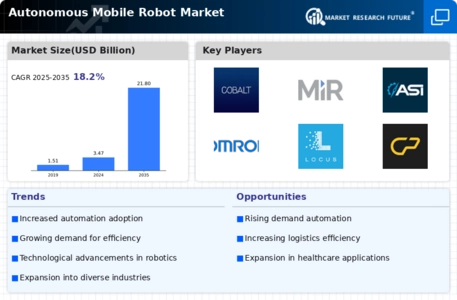
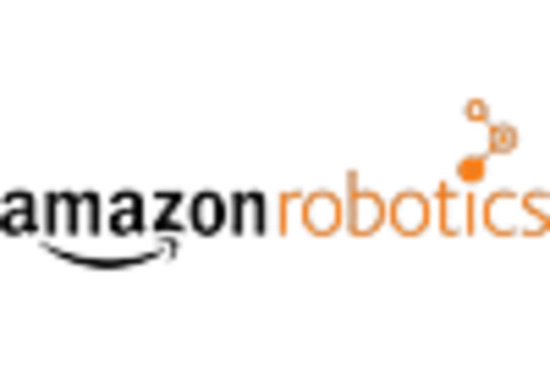

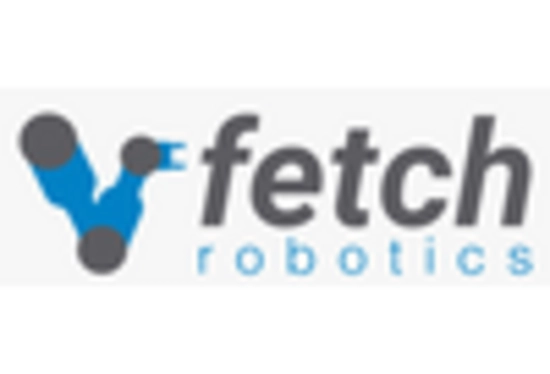
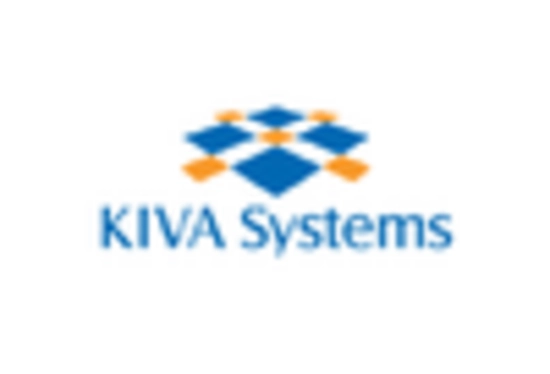

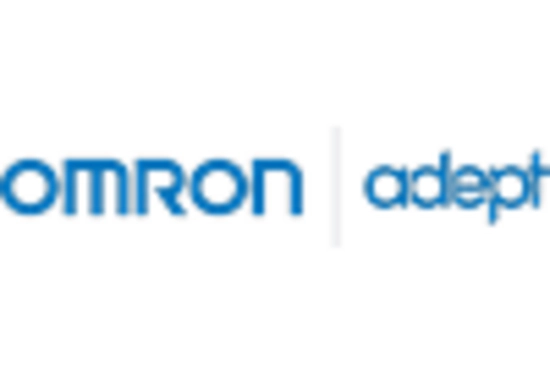









Leave a Comment